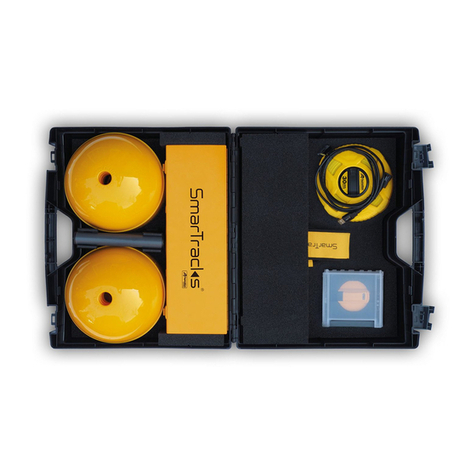SmarTracks Diagnostics v.3.16 Installation Guide & User Manual 1
1. Safety Instructions
ATTENTION!
Before using your SmarTracks Diagnostics, read all instructions on handling the device and timing
gates, including the safety information.
1.1. Electronic Measuring Equipment
Non-compliance with this safety information may result in a fire, electric shocks or other injuries, or
may lead to damage to the system components.
Do not drop the measuring equipment, and do not dismantle, open, break, bend, deform, drill through,
crush, burn or paint it. Do not heat in a microwave and do not insert foreign objects into the device.
When attaching the sensor to your computer, we recommend using the provided USB extension cable
to protect your computer from humidity and dirt. If you need to attach the sensor directly make sure
there is no moisture or dirt on the sensor! Do not try to dry the sensor with an external heat source
such as a microwave or a hot air gun.
Never try to repair the measuring equipment yourself.
1.2. Timing Gates
Timing gates contain powerful magnets. The magnetic field can damage
e.g. mobile phones, TVs, laptops, computer hard drives, credit cards, data
media, mechanical clocks, hearing devices, speakers, and the measuring
sensor.
Therefore, these devices should never be kept in close proximity to the
timing gates. A minimum distance of 50 cm must be maintained. Do not
try to open the timing gates.
Always keep the sensor at a safety distance of at least 10cm from the timing gates.
ATTENTION!
Magnets may affect the function of pacemakers and implanted defibrillators.
If you have such devices fitted, keep them at a sufficient distance from the
magnets.




























